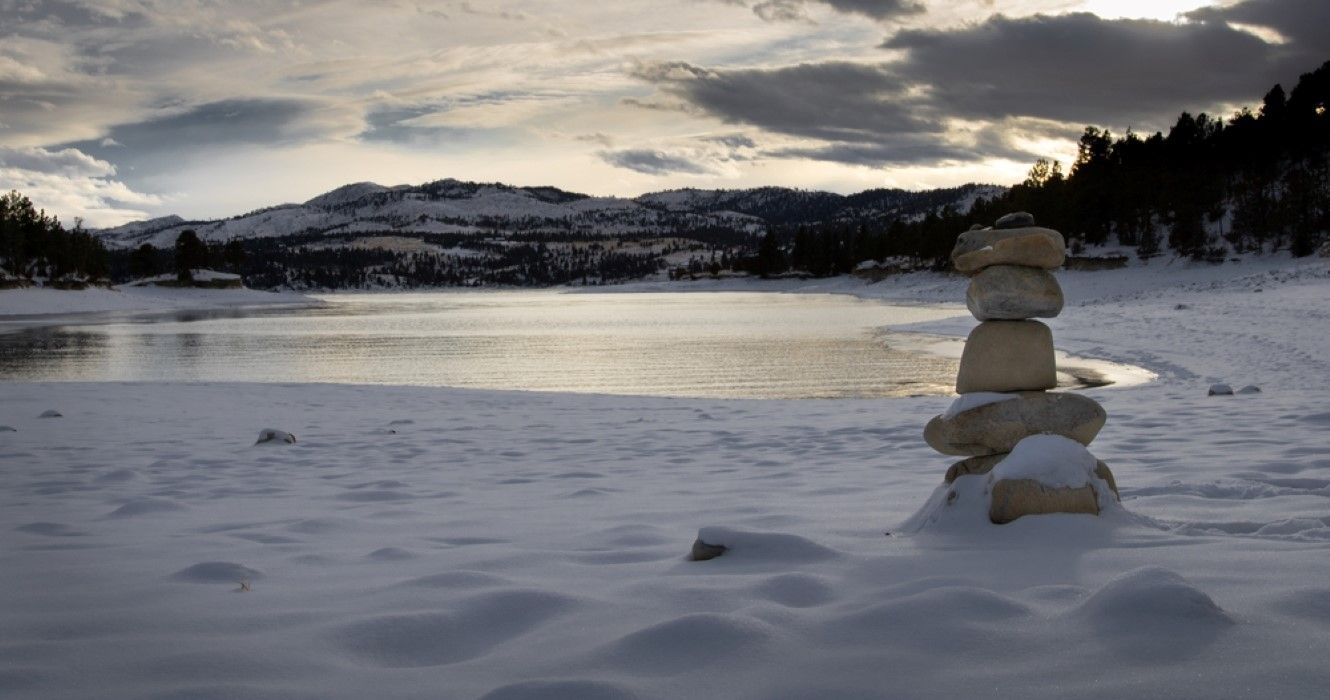Forget about oceans. Granted, without whale watching and a dozen other activities we can only enjoy at the ocean, life would not be as pleasurable. Yet lakes have an attractive appeal that oceans cannot master. The thrilling experience of kayaking or paddle boarding on a calm, Alpine lake that no one has ever heard about is a dream-like adventure no one would want to miss out on. But small lakes are also just beautiful. Think of the small, twinkling stars—in comparison to the sun.
Yet, for many bodies of water, lakes included, the unseen bottom is a thriving world of unimaginable aquatic life or some buried work of man’s hand and genius. An example is Canyon Ferry Lake in Montana, where a 19th-century town is completely submerged. In this article, we reveal the fascinating story of a town that lies buried beneath Montana's third-largest body of water.
Here’s The Story Of A Town Buried Under Canyon Ferry Lake
One fine Sunday in July 1805, Captain Lewis of the famous Lewis & Clark Expedition was in Montana. It was probably their very first time here. According to available records, the team would spend about half of their 846-day expedition in Montana. The explorer had been impressed by the landscape stretched out before his eyes. In his own words, the area contained “the most remarkable cliffs that we have yet seen.” He went on to christen the area “the gates of the Rocky Mountains.” But the “Muddy Missouri,” the nation’s longest river which gave the area its sweeping allure— was not entirely a blessing.
While the region was bewitchingly serene as it was far from the clutter of large cities, the Missouri River—first gave birth to a small community along the verdant borders of the valley—then threatened to altogether obliterate that settlement from the map of the United States. The early settlers were drawn to the area by various factors. Some came to prospect for gold. Some came for business or agriculture. Whatever the reasons, soon, a town was pulsating with life—complete with a hotel, a post office, a stage office, a cemetery, and a saloon, among other structures. The town was known as Canton. In 1865 a ferry was introduced, subsequently known as Canyon Ferry— to aid in the crossing of the Missouri River on either side.
To try to control the misery and distress that the frequent flooding of the river was visiting the town’s residents, a dam would be built and completed in 1898. This harvesting of water was the occasion for many families abandoning the historic town of Canton in favor of the surrounding environs, which were a bit elevated and hence, not much prone to the dam’s overflow. The initial reservoir was known as Sewell, giving rise to the common name—Lake Sewell. Since the problem of flooding was not completely eliminated, a second reservoir would be built and completed in 1954. This second, bigger reservoir was known as Canyon Ferry Dam, a name that has echoes of the initial ferry—previously established to aid in crossing the river. With the construction of this second reservoir, Canton would be slowly but completely—submerged.
What To Expect At Canyon Ferry Lake, Montana
Today, any visitor to Canyon Ferry, Montana, would enjoy the incredible views of the “lake” and get back without any idea of its buried treasure. Yet technically, Canyon Ferry, as we’ve seen—is not a lake. Or perhaps, to put it more correctly, it’s not a lake formed through the outworking of nature. Instead, it’s a man-made reservoir. Canyon Ferry is a huge attraction definitely due to its proximity to Helena, the charming capital city of Montana, and the county seat of Lewis and Clark County. But Canyon Ferry is also just about a two-hour drive from Great Falls.
- How Far Is Canyon Ferry Lake From Helena, Montana? Canyon Ferry Lake is about 21 miles east of Helena, Montana, on US 12-287.
The area around Canyon Ferry Lake is surrounded by breathtaking scenery, just as Captain Lewis described it over two hundred years ago. On the eastern side are the Big Belt Mountains, while on the opposite side, the Spokane Hills graze the sky in solemn grandeur. To the south are the Elkhorn Mountains—known for the reddish-brown animals with craggy antlers that lend the hills its name. The many fun-filled activities that one can enjoy at Canyon Ferry Lake include fishing, skating, boating, camping, wildlife watching, and hiking.
And while the historic town of Canton has sunk with the water and left no trace of a once bustling town, not all is lost. Visitors can still see Canyon Ferry Cemetery, now a small island in Canyon Ferry Lake. It survived because it was perched on a hill that ensured it never fell victim to the flooding caused by the reservoirs. There's also a Catholic Church that survived because it was moved about four kilometers to the mainland. To travel to Canyon Ferry Lake is to recall the evocative scenes of its checkered past.

